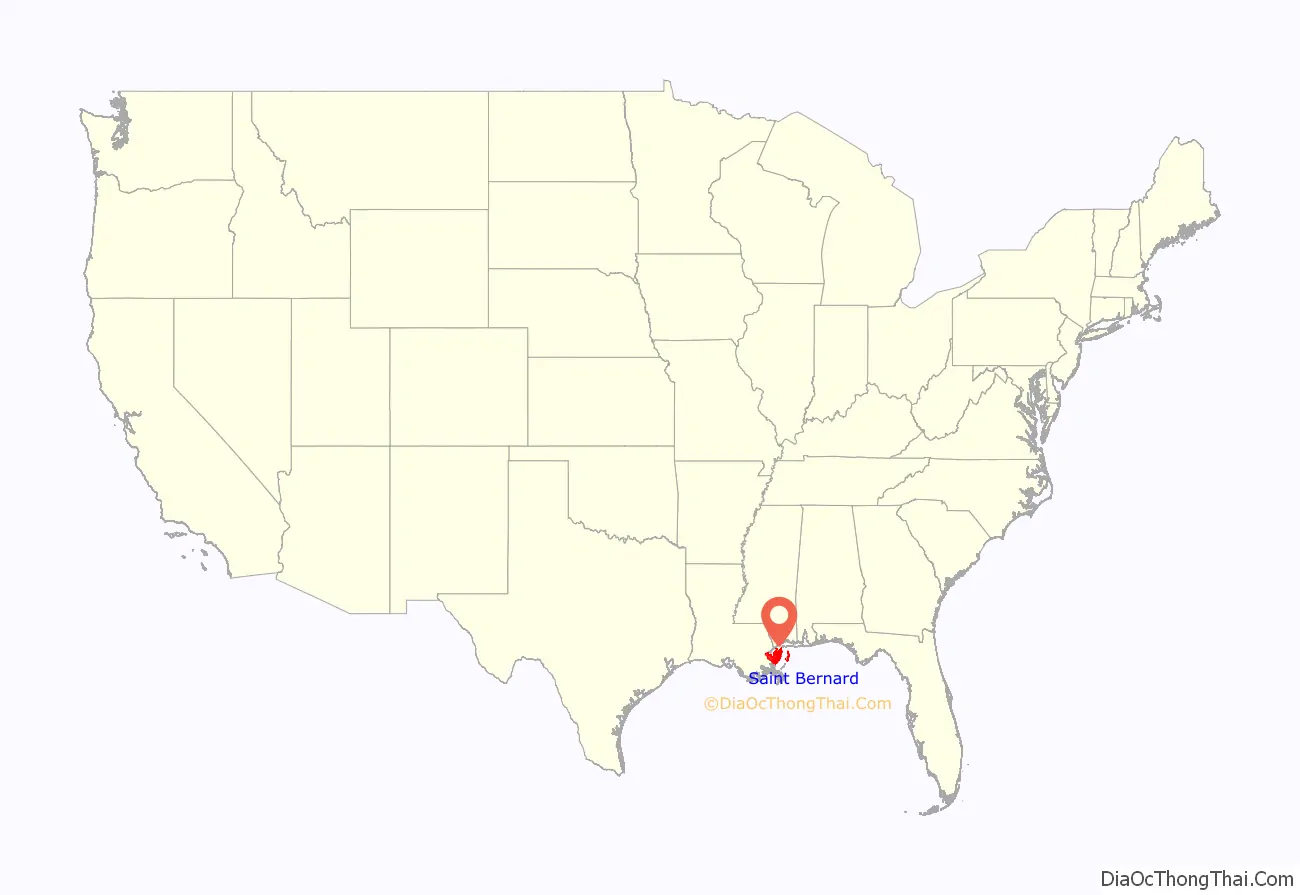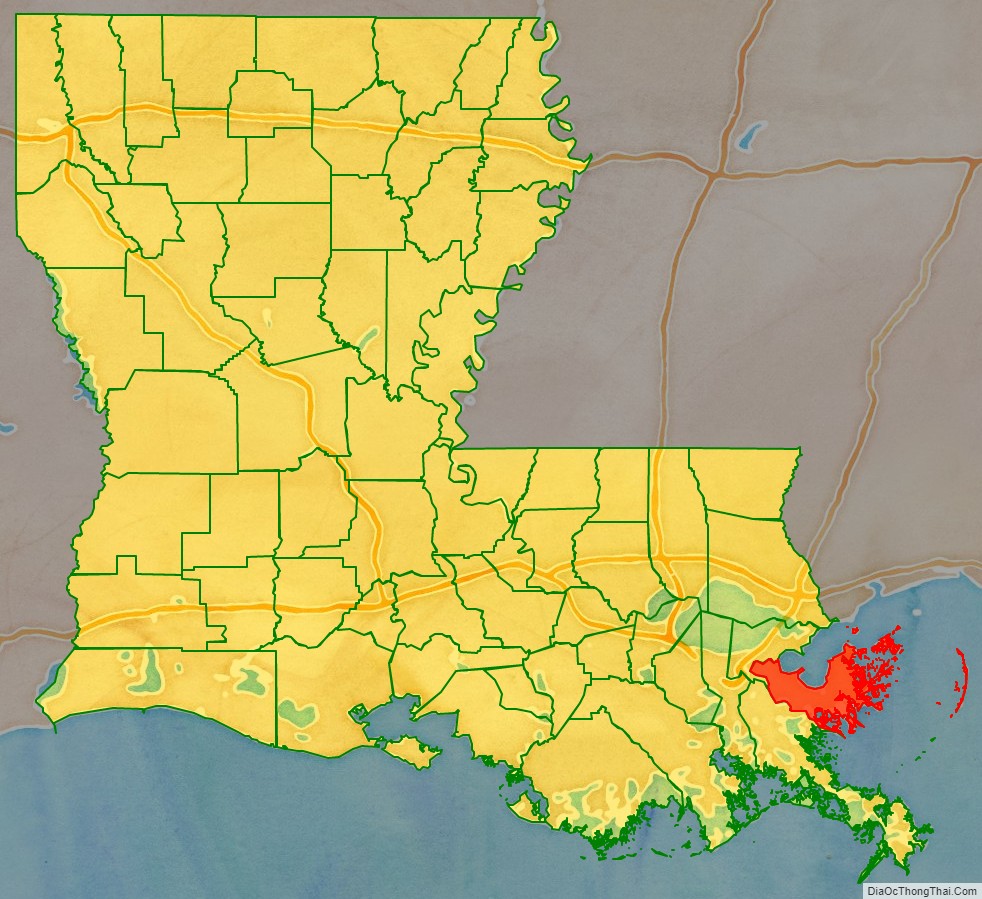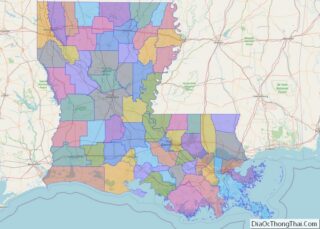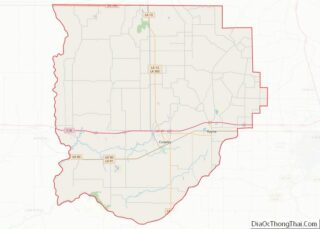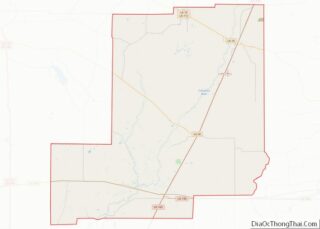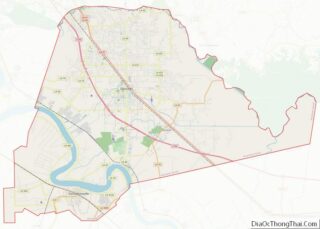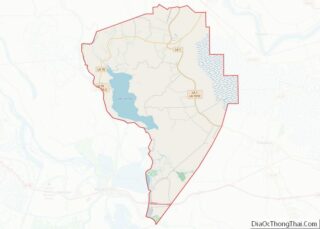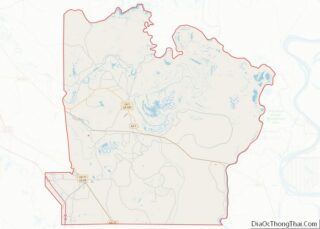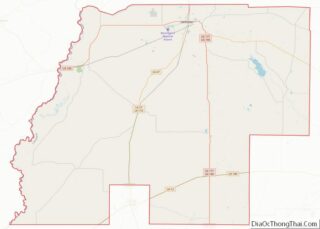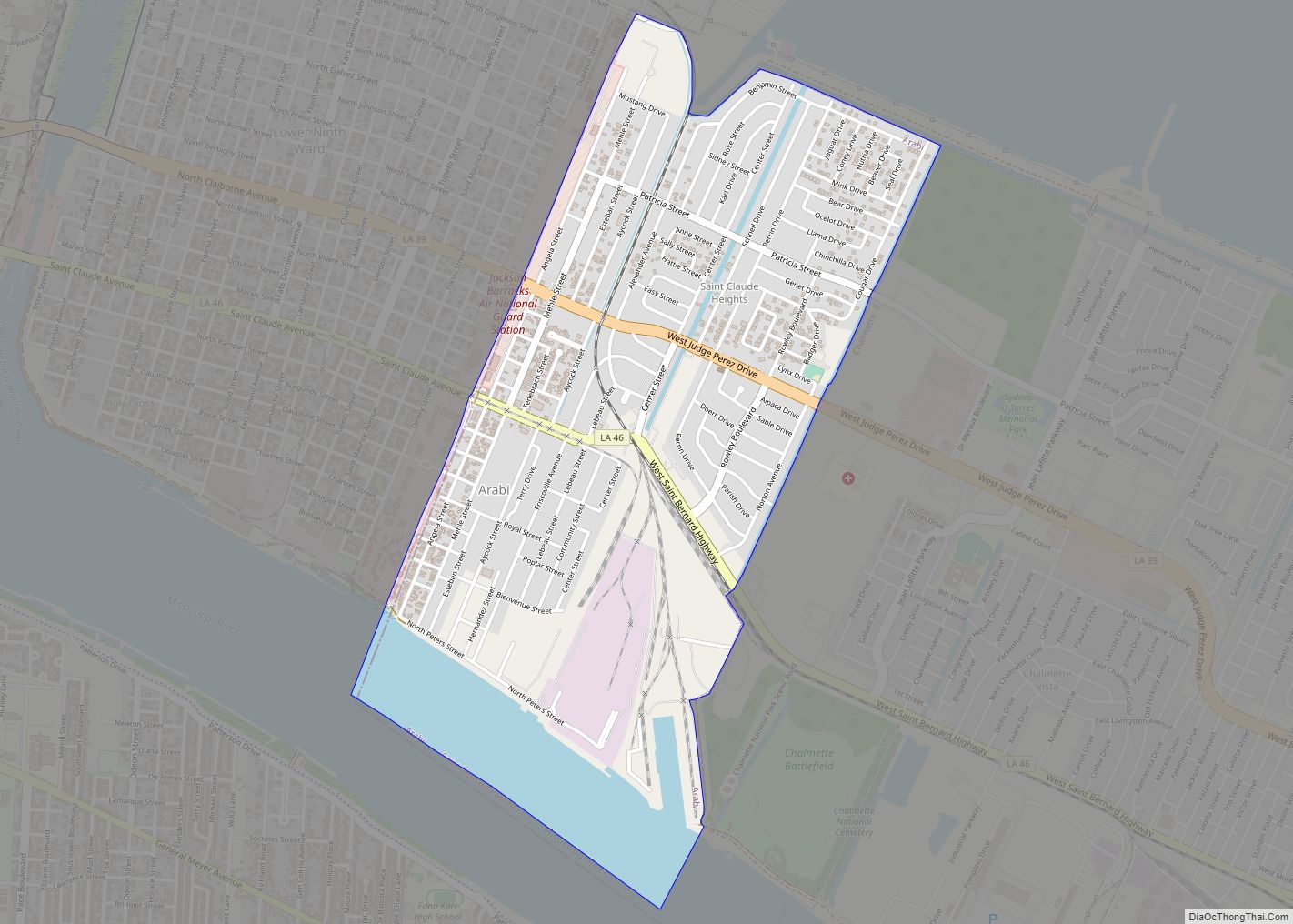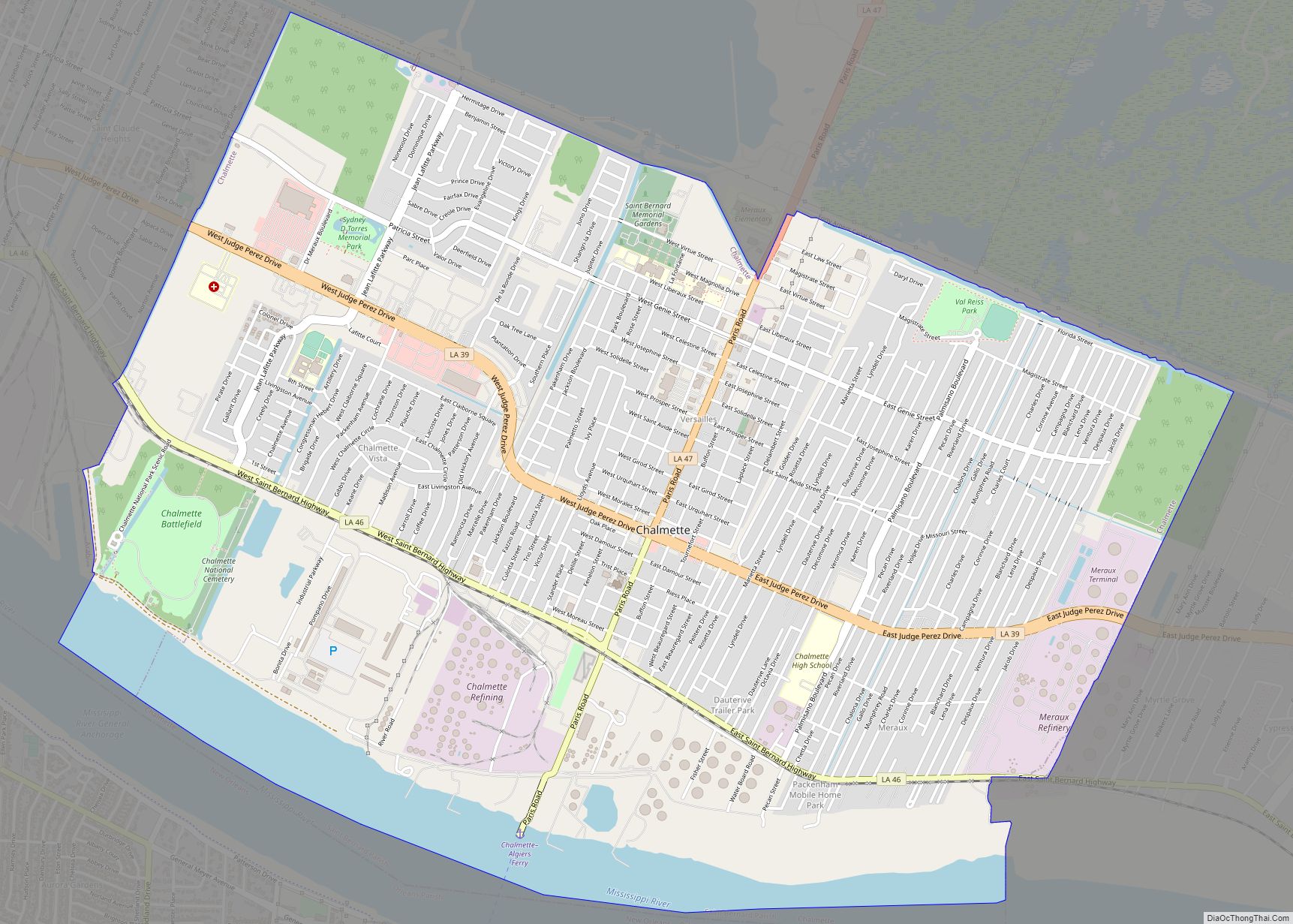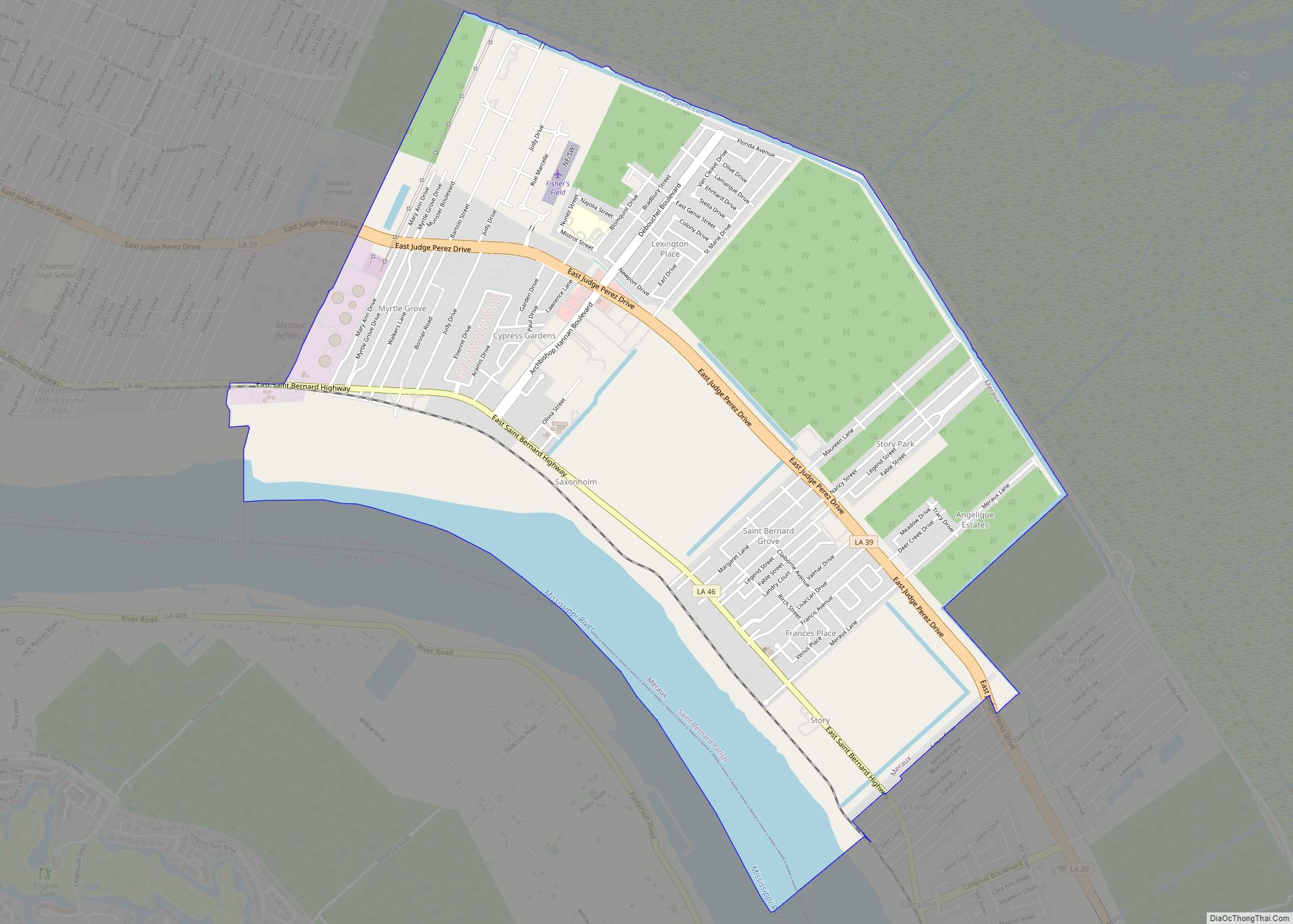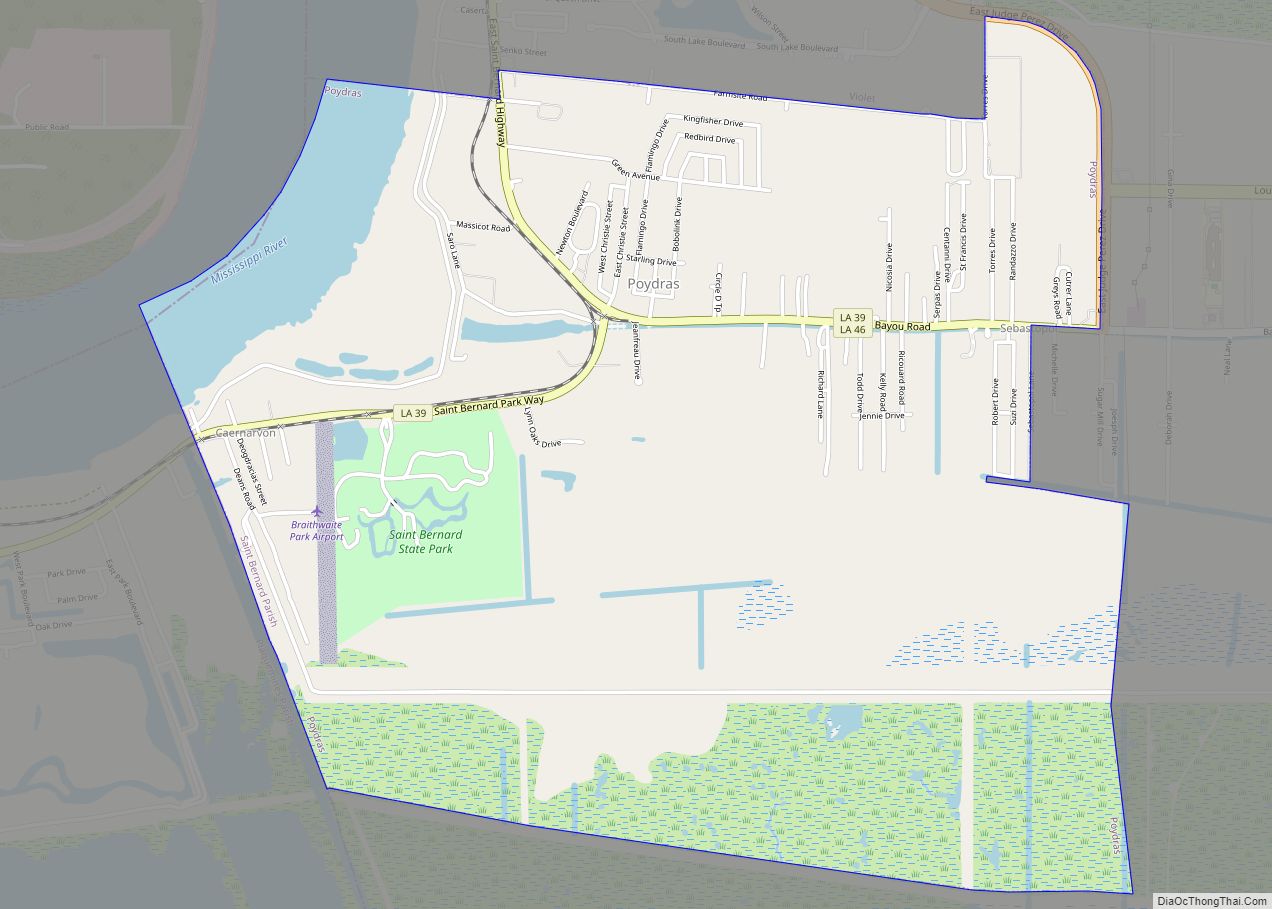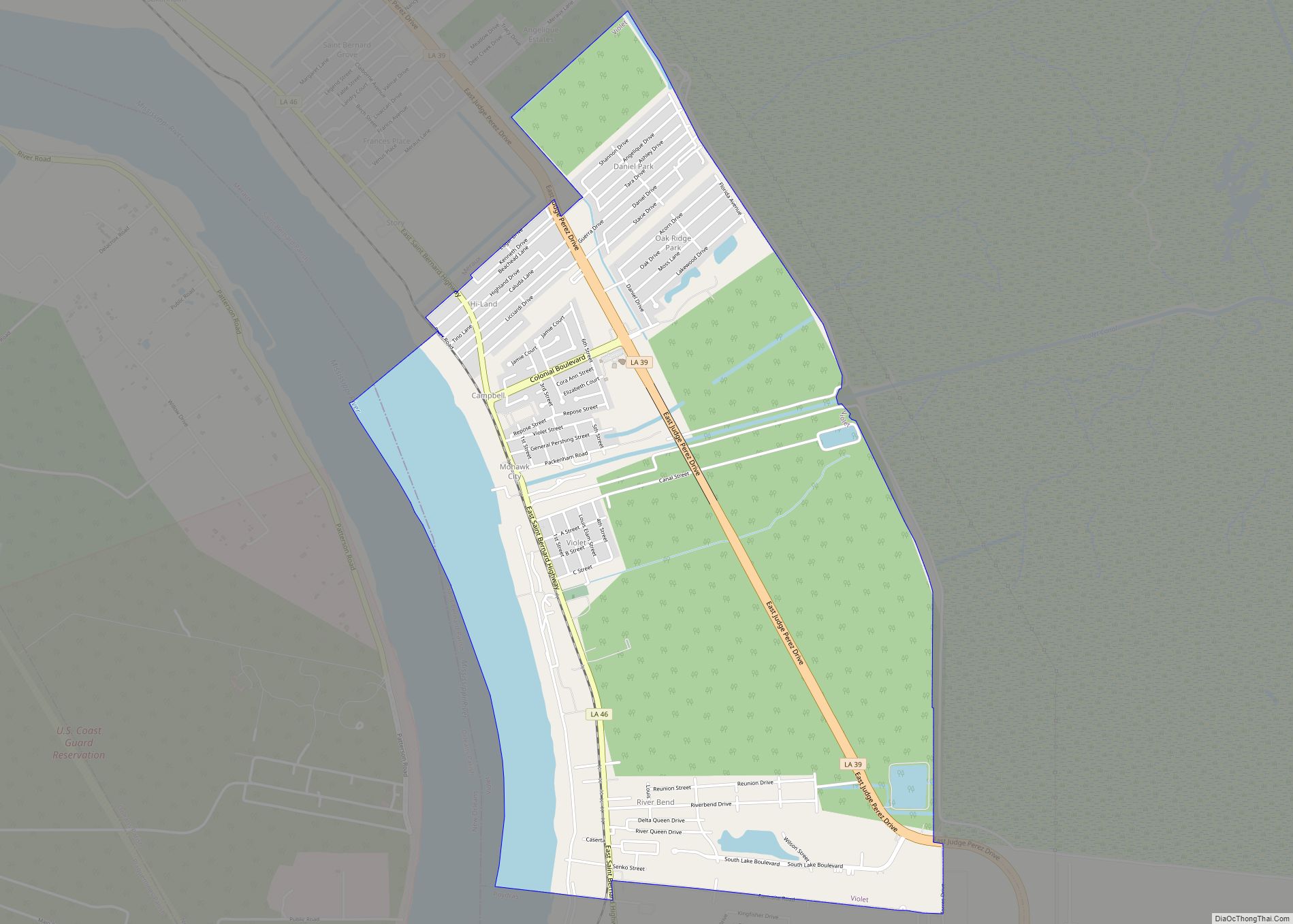St. Bernard Parish (French: Paroisse de Saint-Bernard; Spanish: Parroquia de San Bernardo) is a parish in the U.S. state of Louisiana. The parish seat and largest community is Chalmette. The parish was formed in 1807. St. Bernard Parish is part of the New Orleans–Metairie metropolitan statistical area; the parish is located southeast of the city of New Orleans and comprises the Chandeleur Islands and Chandeleur Sound in the east.
St. Bernard was the fastest growing parish in Louisiana from 2010 to 2020, increasing from a population of 35,897 in the 2010 census to 43,764 in 2020. It remains at less than two-thirds of its 2000 population of 67,229, prior to Hurricane Katrina.
| Name: | St. Bernard Parish |
|---|---|
| FIPS code: | 22-087 |
| State: | Louisiana |
| Founded: | March 31, 1807 |
| Named for: | Bernardo de Galvez |
| Seat: | Chalmette |
| Total Area: | 2,158 sq mi (5,590 km²) |
| Land Area: | 378 sq mi (980 km²) |
| Total Population: | 43,764 |
| Population Density: | 115.78/sq mi (44.70/km²) |
| Time zone: | UTC−6 (Central) |
| Summer Time Zone (DST): | UTC−5 (CDT) |
| Website: | www.sbpg.net |
St. Bernard Parish location map. Where is St. Bernard Parish?
History
St. Bernard Parish contains a large community of Spanish descent. Sometimes referred to informally as “Spanish Cajuns”, the Isleños are descended from Canary Islanders. This linguistically isolated group eventually developed its own dialect. The Isleños settled along Bayou Terre aux Boeufs, a relict distributary bayou of the Mississippi River. According to Dumont de Montigny, who was in Louisiana from 1719 to 1738, Terre aux Bœufs (bœuf is ‘steer’ or ‘ox’ in French, thus Terre aux Bœufs means ‘land of oxen’) was named in that period, presumably due to the presence of domestic or feral cattle there, and not because of bison (bison in French). This settlement was called La Concepción and Nueva Gálvez by Spanish officials, but was also called Tierra de Bueyes (Spanish for ‘land of oxen’). Saint Bernard, the patron saint of colonial governor Bernardo de Gálvez, was used in documents to identify the area.
St. Bernard Parish is also home to the earliest Filipino community in the United States, Saint Malo, Louisiana.
The chief historical attraction in St. Bernard Parish is the Chalmette Battlefield (part of Jean Lafitte National Historical Park and Preserve), at which the Battle of New Orleans took place on January 8, 1815, during the War of 1812. Many street names near the battlefield bear the names of the chief participants, or take a pirate theme, since the pirate Jean Lafitte was considered to be a hero in the battle. A high school, later elementary and now a middle school, was named in honor of Andrew Jackson, who was the commanding officer in charge of defending New Orleans against the British invasion.
In 1863, Abraham Lincoln mentioned St. Bernard Parish in the Emancipation Proclamation as an area not in rebellion against the Union during the Civil War.
From 1919 to 1969, the parish was effectively ruled as part of the fiefdom of Leander Perez, a local Democratic official in neighboring Plaquemines Parish.
1868 St. Bernard Parish Massacre
In 1868, St. Bernard Parish was home to one of the deadliest massacres in Louisiana history. The St. Bernard Parish massacre occurred during the Reconstruction era, days before the Presidential election of 1868. As black men gained the right to vote, white Democrats of the parish feared losing their majority. Armed groups mobilized to violently silence these recently emancipated voters to win the election in favor of Democrat Horatio Seymour over Republican Ulysses S. Grant. A Seymour victory meant the end of Reconstruction over the South and the return of Louisiana to home rule. Many freedmen were dragged from their homes and murdered. Others fled to the cane fields to hide from the perpetrators.
The use of violence to suppress Republican votes was successful. Grant only received one vote from St. Bernard Parish, despite having a Republican majority. The reported number of freedmen killed varies from 35 to 135; the number of whites killed was two (one was killed in an attempt to help the victims).
Great Mississippi River Flood of 1927
During the Great Mississippi Flood of 1927, New Orleans city and state leaders used dynamite to breach a levee at Caernarvon, 13 miles (19 km) below Canal Street, to save the city of New Orleans from flooding. At the time, it was thought by New Orleans residents that the dynamiting saved the city, but historians now believe that the dynamiting was unnecessary due to major upstream levee breaks that relieved pressure on the New Orleans levees. The levee breach caused flooding and widespread destruction in most of Eastern St. Bernard Parish and parts of Plaquemines Parish. Residents were never adequately compensated for their losses.
Hurricane Katrina, 2005
On August 29, 2005, St. Bernard was devastated by Hurricane Katrina. The storm damaged virtually every structure in the parish. The eye of Katrina passed over the eastern portion of the parish, pushing a 25-foot (7.6 m) storm surge into the Mississippi River Gulf Outlet (“MRGO”). This surge destroyed the parish levees. Almost the entire parish was flooded, with most areas left with between 5 and 15 feet (1.5–4.6 m) of standing water. The water rose suddenly and violently, during a period which witnesses reported as no more than fifteen minutes. In many areas, houses were smashed or washed off their foundations by a storm surge higher than the roofs.
For more than two months after the storm, much of the parish remained without proper services, including electricity, water, and sewage. Parish President Henry “Junior” Rodriguez declared all of the parish’s homes unlivable. Emergency Communities offered one reason for hope in the first year after Hurricane Katrina. In the parking lot of a destroyed off-track betting parlor, EC built the Made with Love Cafe and Grill, a free kitchen and community center serving 1500 meals per day. Made with Love, housed in a geodesic dome, also offered food and clothing distribution, and emotionally supportive volunteers. Upon leaving, EC has offered logistical support for the founding of a new long-term Community Center of St Bernard.
As of late November 2005, it was estimated that the Parish had some 7,000 full-time residents, with some 20,000 commuting to spend the day working, cleaning up, or salvaging in the parish and spending their nights elsewhere. By mid-December some businesses had returned to the Parish, most notably the ExxonMobil plant in Chalmette and the Domino Sugar plant in Arabi, together with a handful of small local stores and businesses.
At the start of January 2006, it was estimated that some 8,000 people were living in the Parish. The H.O.P.E. Project, a collective of volunteer relief workers, founded itself in January 2006 in the empty shell of the Corinne Missionary Baptist Church in Violet, LA, providing the tools for rebuilding and community empowerment. Since June 2006, Camp Hope, located in Arabi, has been housing volunteers’ assisting residents of St. Bernard Parish in their recovery from Hurricane Katrina. A grassroots organization, the St. Bernard Project, opened in March 2006. A fully volunteer-run organization funded by the United Way, they help residents get back into their homes by working on the houses, providing tools, support and where possible, funding.
As of October 2006, the population was estimated to be 25,489. After population losses due to Hurricane Katrina, the school was reopened for elementary grades for the 2006–2007 school year.
Hurricane Ida, 2021
As of the landfall of Hurricane Ida on August 29, 2021, St. Bernard Parish has been experiencing heavy flooding. Two days before, local officials and weather experts advised citizens to prepare for the storm, warning that rainfall could reach at most 11 feet. St Bernard Parish President, Guy McInnis, stated he does not plan to issue a formal evacuation order.
St. Bernard Parish Road Map
Geography
According to the U.S. Census Bureau, the parish has a total area of 2,158 square miles (5,590 km), of which 378 square miles (980 km) is land and 1,781 square miles (4,610 km) (83%) is water. It is the second largest parish in Louisiana by total area and has the largest percentage of area in water of any parish.
The parish of St. Bernard embraces numerous small islands. The parish is classed among the alluvial lands of the state. The ridges comprise the arable lands of the parish and have an area of 37,000 acres (150 km). The principal streams are the Bayous Terre aux Boeufs and La Loutre. There are numerous smaller streams which are efficient drainage canals. The dominant tree species is bald cypress, of which the most valuable trees have been cut and processed.
Bodies of water
- Lake Borgne (north)
- Mississippi River (southwest)
- Gulf of Mexico (east)
Major highways
- Louisiana Highway 39
- Louisiana Highway 46
- Louisiana Highway 47
Adjacent counties and parishes
- Hancock County, Mississippi (north)
- Harrison County, Mississippi (northeast)
- Orleans Parish (northwest)
- Plaquemines Parish (south)
- St. Tammany Parish (northwest)
National protected areas
- Breton National Wildlife Refuge (part)
- Jean Lafitte National Historical Park (part, in Chalmette)
State park
- St. Bernard State Park
Communities
There are no incorporated areas in St. Bernard Parish.
- Caernarvon
- Hopedale (La Chinche)
- Reggio (Bencheque)
- Saint Bernard
- Shell Beach
- Versailles
- Verret
- Alluvial City
- Fazendeville
- Proctorville
- St. Malo
